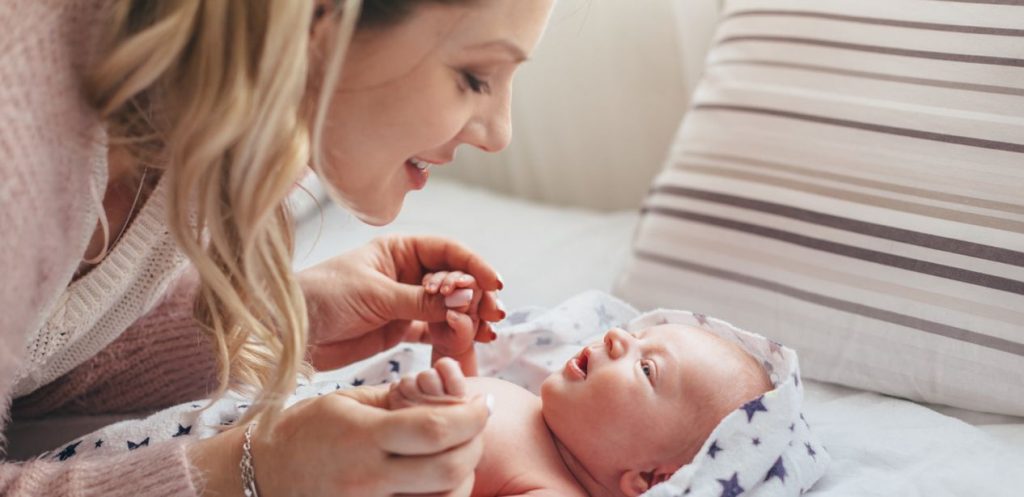In the first 5 months of life, your newborn’s brain is most active in developing sensory pathways and language. In other words, you don’t want to miss this once in a lifetime opportunity. Even though your baby is not yet talking and responding, they are learning how sounds (phonics) work, how language works and how conversation works. This starts from the day they are born.
It is essential to chat with your baby – even if you feel a bit silly having a one-sided conversation. It soon becomes routine, and you will talk with your bub without a second thought.
Here are the key language and listening skills to focus on during the first 5 months – note I will use the name Lily as the baby in examples:
1. Saying hello and goodbye, for example, if someone is visiting prompt this conversation with “Lily, let’s say hello to Grandma, hello Grandma”, when Grandma leaves “Time to say goodbye, Lily, say goodbye Grandma, goodbye”.
2. Can you help? This is the perfect question to start using with your baby during daily routines. For example “Lily, can you help me while I change your nappy? Can you keep your arms still?” or “Can you help put your hat on?” while you put the hat on Lily.
3. Let’s read a book together. Use this phrase every time you open a book to read with your child, they will associate this sentence with reading. Ensure reading happens in lots of environments; before bed while waiting for an appointment, at a friend’s house or out and about.
4. Do you want _____ or ______? Giving a choice. Even though bub can’t talk and answer you, they still need to be offered a choice. For example, “Lily, do you want teddy or the ball?” – Giving bub the option they look towards and then “good choice!”.
5. I see that you’re feeling ____. Whenever your baby is displaying emotion or feeling, use this sentence. It will help develop their emotional intelligence.
6. What do you see? After asking your baby what they can see, start to label environmental items “Lily, can you see the tree? Yes, you can see the tree!” or “Lily what can you see? Can you see daddy?”
7. I love you. Not just at bedtime but at other times in the day, especially in moments of frustration or exhaustion.
8. Verbalising what is happening. It is essential to talk to your baby about what is going on around them, or to them. At all times in the day. For example, “Lily, I am going to change your nappy, first, let’s take off your clothes…” or “it’s tummy time, let’s lay on the mat and look in the mirror” or “what should we do today? (leave a gap of time before saying) “Today we should…”.
Your bub will learn that conversations are turn-taking, that there is a pattern in conversation and that words mean something. So, keep going, keep chatting away, and one day, you’ll be surprised by a gurgle or a squeak of acknowledgement and reply.
Other articles you might be interested in:






